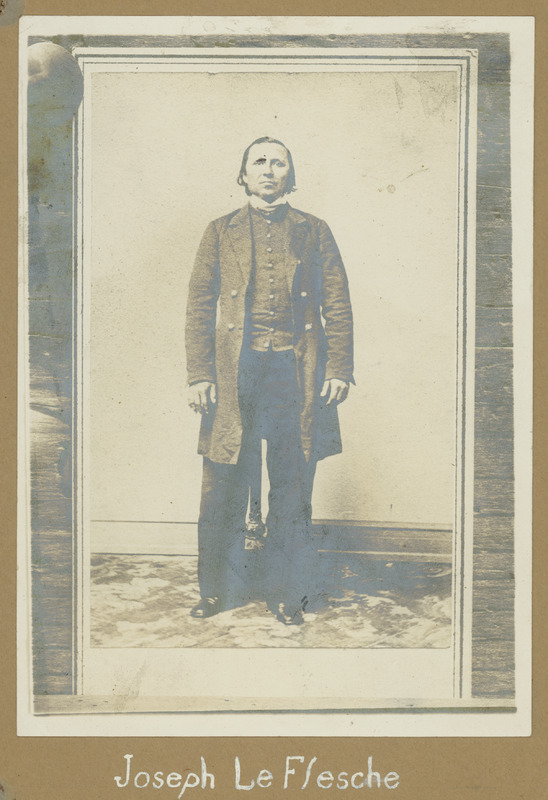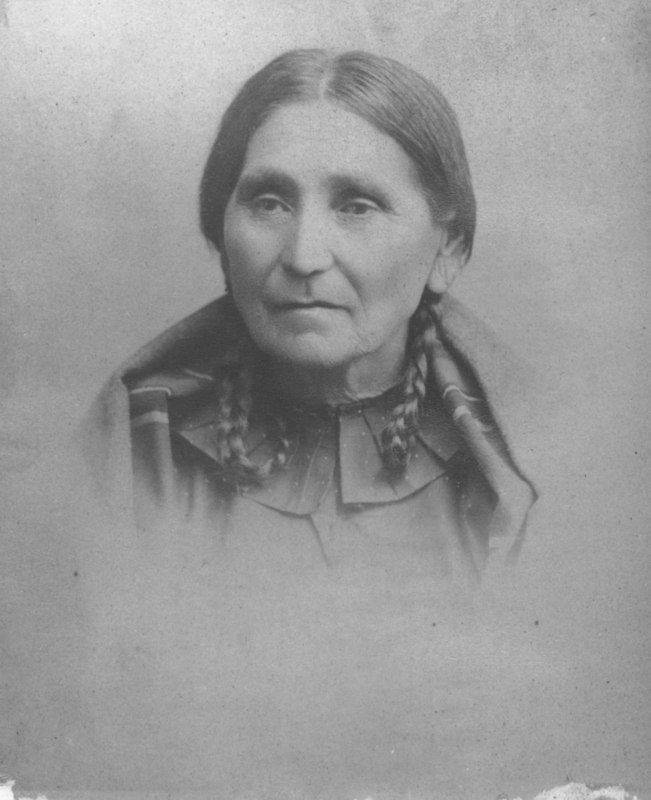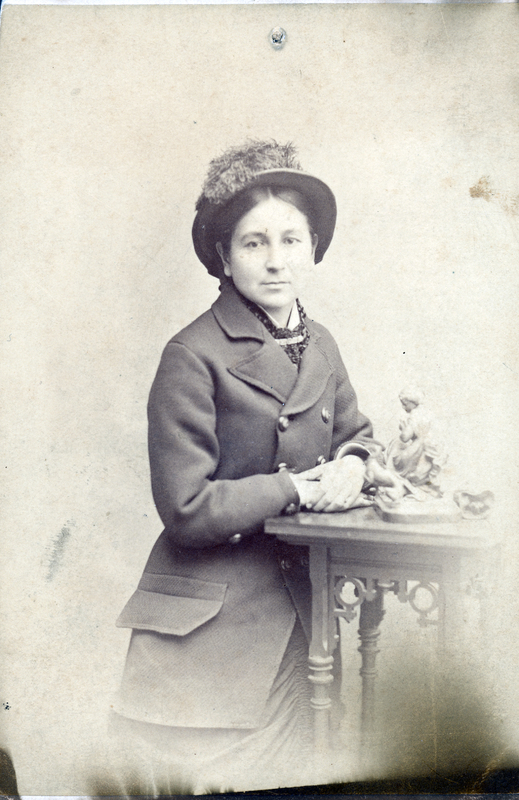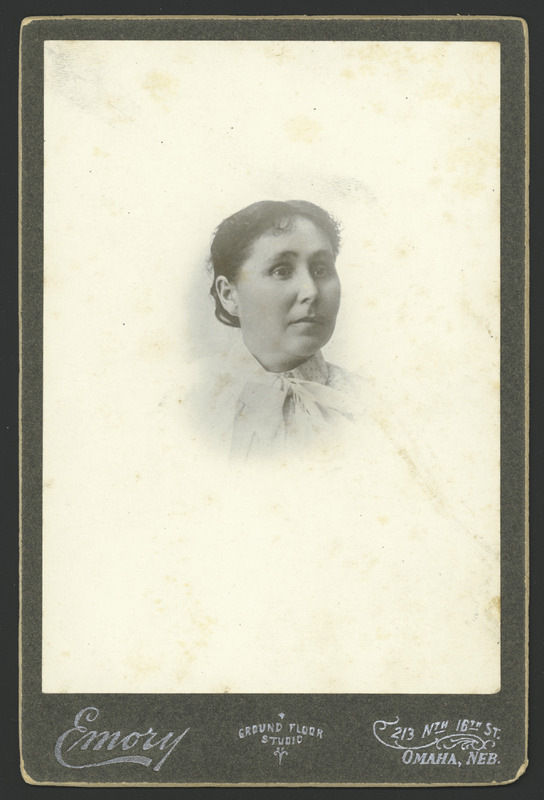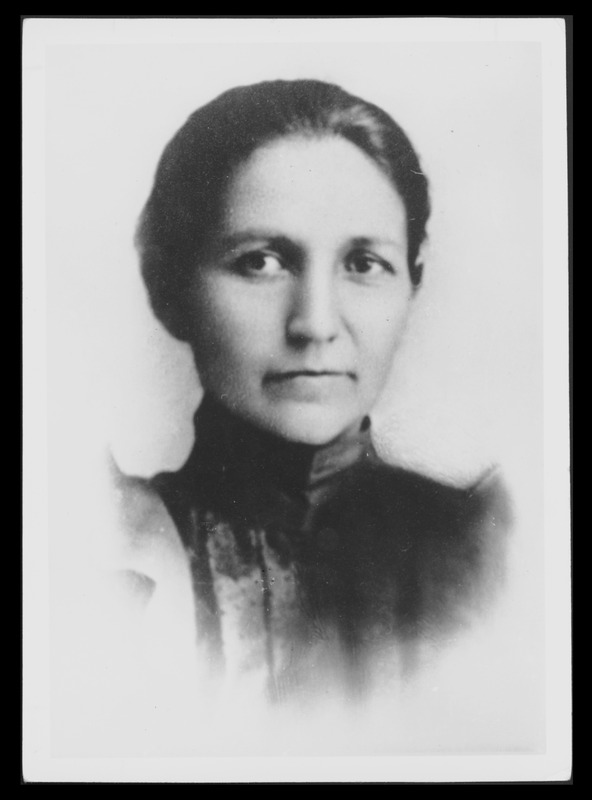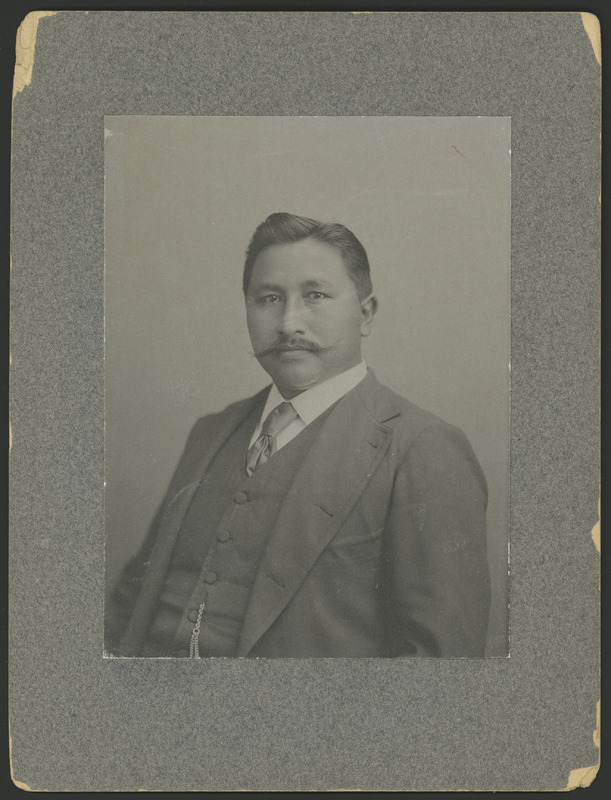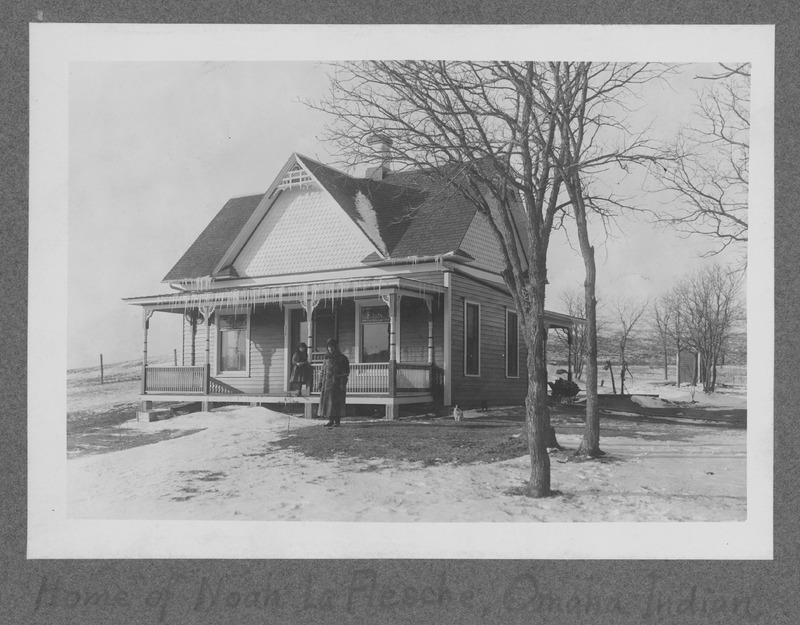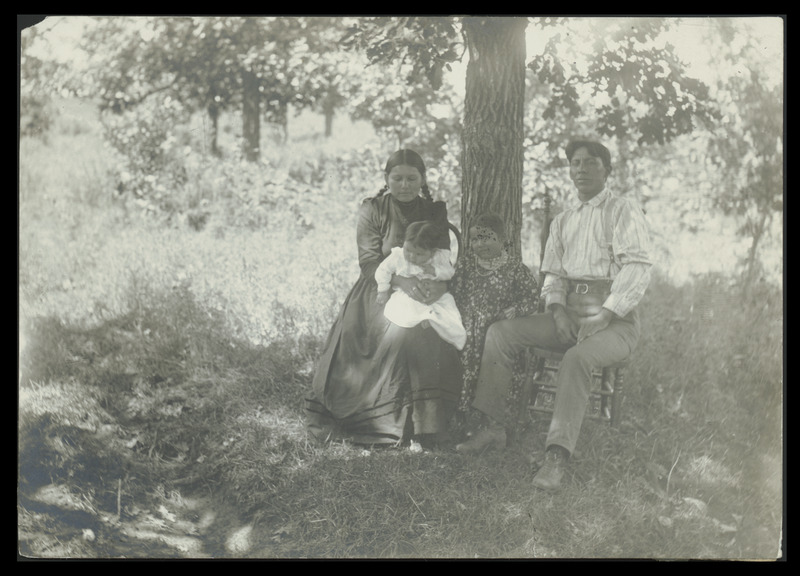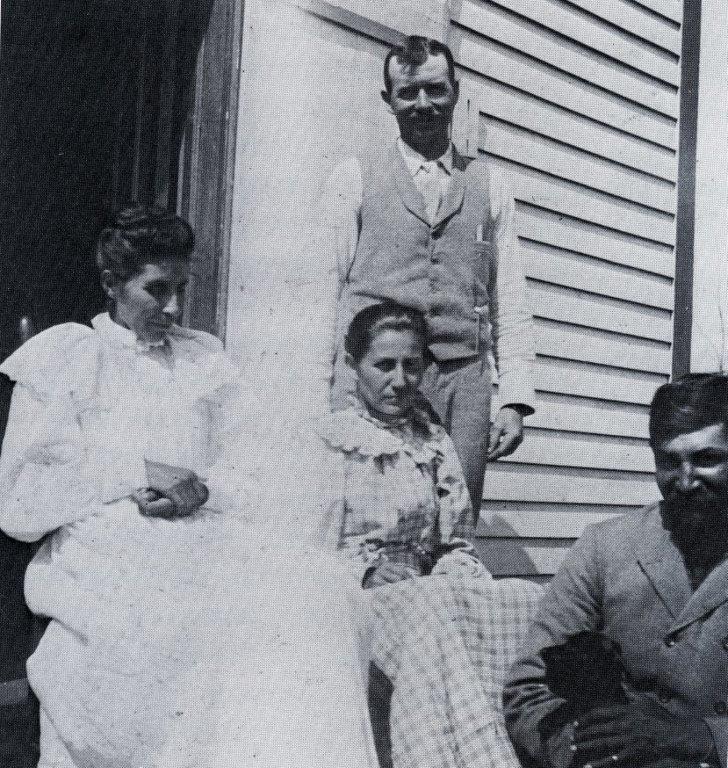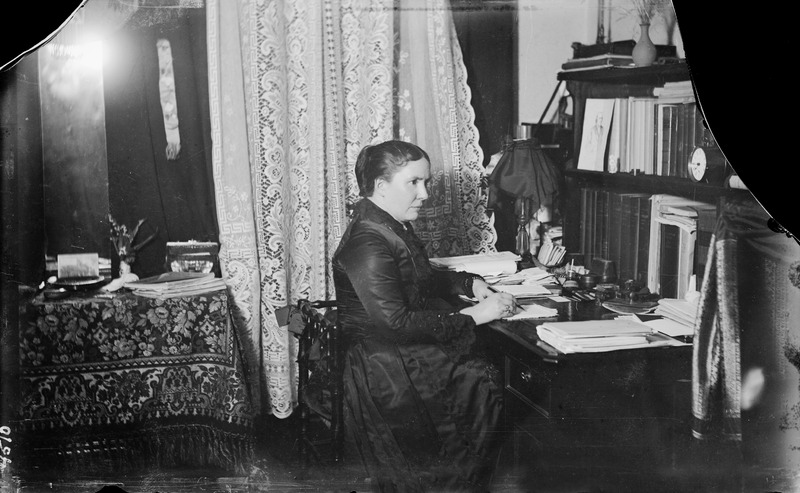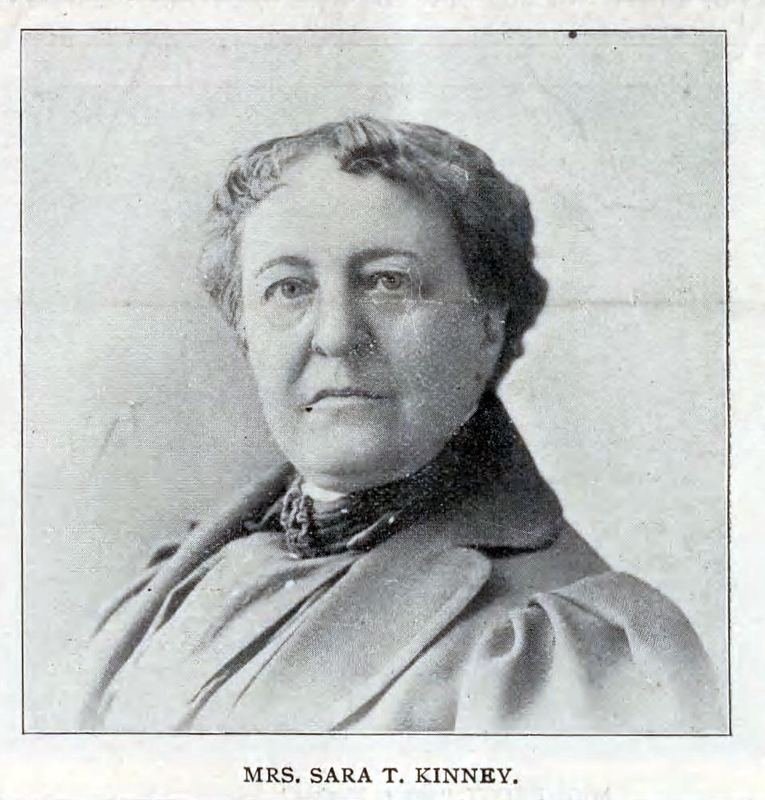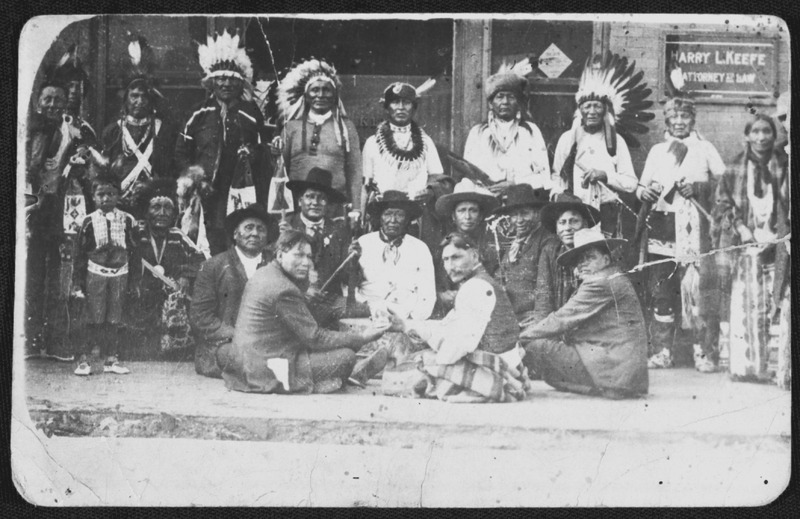E-sta-mah-za “Iron Eye” (Joseph) La Flesche
Dr. Picotte's father, E-sta-mah-za “Iron Eye” (Joseph) La Flesche, was the last recognized chief of the Umonhon. His father was a French fur-trader and his mother was Omaha-Ponca. He was adopted by the Omaha chief, Big Elk, and became chief upon Big Elk’s death. He signed the last Omaha treaty that ceded land in the northern part of the reservation for the Winnebago Tribal reservation.

